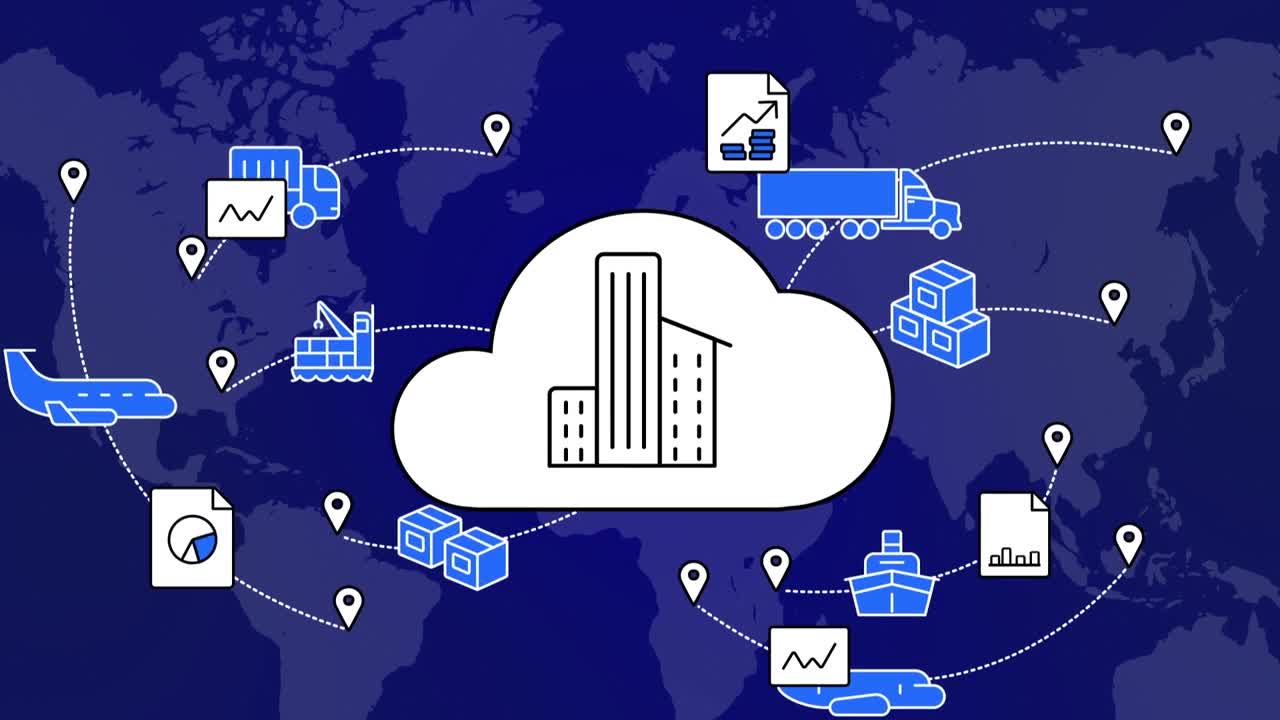Easy EDI Integration
Are you EDI compliant? Leverage an easy, cost-effective electronic data interchange solution and be a supplier of choice for your partners. Automate your business with EDI.
91%
of midmarket companies outsourcing their integrations increased the value of their B2B program[1]
An EDI solution to automate B2B processes

Businesses must improve efficiency while operating with limited resources in an increasingly volatile environment.
Relieve the pressure by automating B2B processes. Collaborate effortlessly with your customers and trading partners across the globe. Get more done without switching between systems by seamlessly flowing data into your Oracle NetSuite®, Microsoft™ Dynamics 365®, SAP® S/4HANA, IBM i or any ERP system.
Whether you are a growing mid-market company or an established larger enterprise, leverage B2B software, with the right mix of outsourced EDI integration and self-service tools, that won’t strain internal resources or budgets.
Benefits of flexible EDI B2B solutions
Meet EDI integration deadlines, within resource constraints and without risk. Choose an EDI solution that is ready to scale when you are. See the competitive advantages of automated EDI.
-
Automate processes
Significantly reduce resource-intensive B2B work with an EDI solution that optimally integrates internal systems with external partners to deliver more efficient EDI transaction flows and automation capabilities.
-
Reduce costs
Quickly realize your ROI with EDI software that significantly reduces the cost of transaction handling, corrections, chargebacks, and other penalty fees caused by avoidable manual data entry errors.
-
Increase EDI solution flexibility
Equip your EDI B2B software with the flexibility to quickly add new trading partners, reach new markets, and change direction in the face of disruption or new business opportunities.
-
Optimize B2B software capabilities
Use composable supply chain optimization add-ons to scale capabilities and quickly respond to changing customer needs, optimize inventory levels, speed time to market, and improve overall performance.
-
Ease ERP EDI integration management
Connect trading partner transaction flows to your ERP or other internal business system with pre-built ERP integration adapters. Complete day-to-day EDI/B2B work without leaving NetSuite, Dynamics 365, or your ERP system of choice.
-
Gain end-to-end visibility and improved decision making
Access real time end-to-end visibility and uncover insights for data-driven decisions. Improve supply chain deliverables, such as on-time delivery and reduced DSO.
The impact of scalable EDI solutions
-
Cost of doing business
Most EDI solutions have a one-size-fits-all approach that eliminates some manual work but fails to deliver the full capabilities that growing businesses need. Get an EDI integration solution that delivers enterprise-grade speed and reliability at mid-market budgets.
-
Partner onboarding
Businesses need the flexibility to meet varied requirements and communication standards while growing their global network and speeding time to revenue. Support every regional and global standard to quickly expand to new partners anywhere in the world.
-
Supply chain collaboration and customer relations
Relying on email, spreadsheets, and paper documents causes fragmentation and errors and inhibits crucial customer relationships. Enhance collaboration, accelerate turnaround, and eliminate errors to become a preferred partner with your customers.
-
Business growth and resilience
EDI integration environments enable growth and improve agility amidst market fluctuations. Rely on a trusted EDI vendor with expertise, self-service tools, and enterprise-level technology to remove transformation roadblocks and resource bottlenecks.
-
Internal business system integration
Reducing manual effort and enabling data visibility requires system integration. ERP integration with a customizable, pre-build adapter achieves seamless data flows and allows a real-time view of all transactions directly within your ERP system.
-
Resource optimization
Despite increasing investment in EDI integration, businesses struggle with finite IT resources and network complexity that delay integration projects. Leverage an EDI integration platform with intuitive self-service tools, and professional support.
Leaders trust OpenText
See how customers are succeeding with scalable EDI integration solutions.
See more success stories
Global headwear brand rapidly onboards its trading partners with OpenText Business Network Cloud Enterprise
Learn moreFrequently asked questions
Explore the components of the solution
Products
OpenText offers a choice of solutions for B2B data exchange and integration:
- OpenText™ B2B Integration FoundationExperience enterprise-grade B2B EDI integration for any size business
- OpenText™ B2B Integration EnterpriseLeverage B2B managed services to easily meet integration requirements
- OpenText™ Business Network Cloud for NetSuiteStreamline your supply chain with NetSuite EDI integration
- OpenText™ Business Network Cloud for Microsoft™ Dynamics 365®Streamline your supply chain with EDI integration for Dynamics 365
Add-ons and extensions
Maximize your supply chain performance.
- OpenText™ Trading GridConnect once, reach anything—integrate beyond trading partners
- OpenText™ Core Collaboration AccessBoost trading partner collaboration throughout the extended enterprise
- OpenText™ Trading Grid e-InvoicingSimplify e-Invoicing compliance to meet regulations in 50+ countries
- OpenText™ Trading Grid Supplier HubEstablish and maintain end-to-end supply chain transaction visibility
- OpenText™ Trading Grid Command CenterDrive deeper supply chain analytics with a versatile command center
Support and guidance
Gain strategic insights with a global EDI B2B leader.
- OpenText™ B2B/ERP Data Discovery and AnalysisA data-driven view into your ERP and supply chain integration requirements

